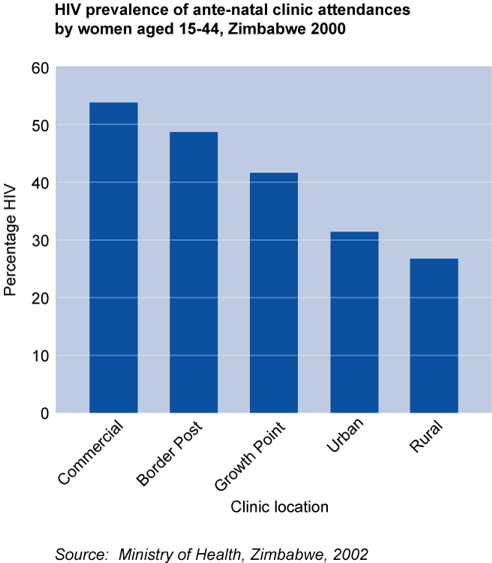
This graph is based on data which come from blood tests on ante-natal women taken at a range of clinics and hospitals in Zimbabwe.
Highest prevalences, over 40%, are at clinics located in the major commercial centres, at border-crossing posts and at designated ‘growth points'. These are all areas of greatest in-migration and population movement, the focus of major trucking routes and commercial sex workers.
Clinics in urban areas generally, including small towns, have rates of 32%, but clinics in rural areas record the lowest rates of 28%.
Though the rates are higher in Zimbabwe than they are in most African countries, the gradation from large town to rural areas is typical. Rates are lowest in rural areas because the pool of infectives has been smaller, and traditional faithful marital relationships more likely. In urban areas, there are a large number of unmarried young people and higher numbers of sexual partners who are more likely to be HIV+.
However, in Zimbabwe, as elsewhere in Africa, the gap between rural and urban prevalence rates has been narrowing over time. Urban migrants, characteristically circular migrants, will regularly return to their rural home areas having experienced high risk sexual behaviour in town, and may then infect their spouses who remain behind, as well as others. Thus the pool of infectives in rural areas is likely to be growing more rapidly than in towns.
Summary:
There are several posssible reasons for the difference between rural and urban areas:
- urban areas have the greatest concentration of migrants, separated from their families and traditional constraints on behaviour.
- in urban areas commercial sex workers are most active and have greatest demand for their services.
- it is in urban areas that new relationships will be formed, especially among young migrants who are experiencing new social freedom.
- in urban areas, people tend to be in less stable relationships and have more sexual partners.